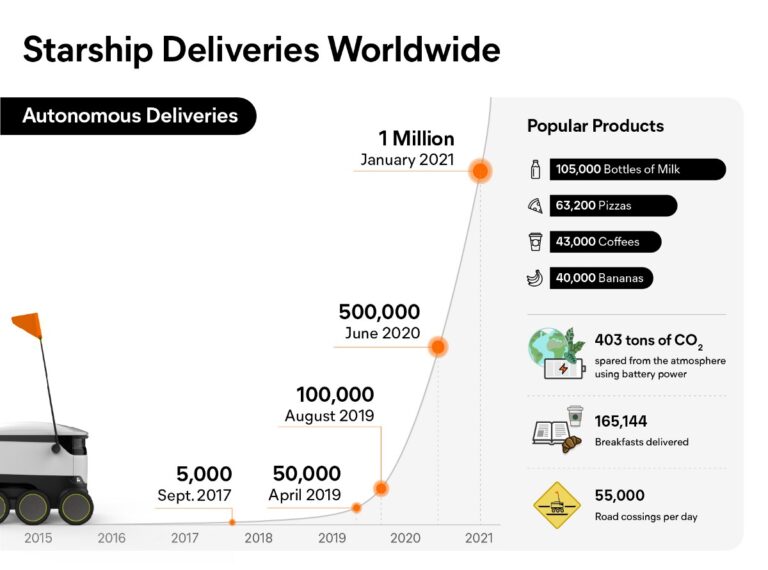
In 1982, Late Night with David Letterman premiered. Sci-fi classic ET was released. Doctors performed the first implant of an artificial heat.
And that same year the ecommerce timeline began with the debut of the Boston Computer Exchange, one of the first ecommerce platforms.
It was a big year.
Flashing forward almost 40 years, it’s impossible to imagine a time when ecommerce wasn’t around. Children of the 90s are blissfully unaware of life without buying and selling over the internet.
But technology has advanced considerably since Boston Computer Exchange’s bulletin-board-based ecommerce system. Where this method of client interaction sufficed at ecommerce’s inception, consumer needs have shifted too. Customer service is now at the very center of online shopping. This encompasses everything from making purchases to resolving issues while maintaining a seamless experience across different channels.
Aspect’s 2020 Consumer Index Report found that six out of ten customers do more business with companies that provide good customer service. That’s where omnichannel customer service comes in.
Omnichannel customer service can accelerate sales for your business. Read on to find out how.
What Is Omnichannel Customer Service?
An omnichannel strategy recognizes the various platforms and devices a customer may use to interact with a business. A business then applies this knowledge to create a unified shopping experience and consistent messaging across each channel. Core channels include mobile, email, SMS, social media, instant messaging and in-person.
According to Aspect, when it comes to personalized service, consumers value channel choice three times more than an agent knowing their name and history, with 46% of consumers rating this as the most crucial part of their shopping experience. Thus your business needs to be everywhere your customers shop.
1. Omnichannel customer service definition.
Ecommerce marketplaces have been on the rise since the mid-90s, with the launch of giants such as Amazon and eBay. And since then, different models of ecommerce have emerged. Whether your ecommerce business framework operates DTC (direct-to-consumer) or B2B (business-to-business or wholesale), customer service is a significant consideration.
When different channels align in an omnichannel model, consistent support is delivered as well as a unified brand experience. It should seem as though the business is running as a single channel, delivering an equally high-quality and uniform customer experience across all platforms.
Research by McKinsey shows that more than half of customers engage with three to five channels during each journey they take toward making a purchase or resolving a request. Also, the average customer attempting to book a single reservation for accommodation online switches nearly six times between websites and mobile channels.
Regardless of how or where a consumer makes contact, they should have access to an integrated experience across touchpoints. Implementing an omnichannel strategy enables organizations to understand the customer lifecycle better. It also helps them deliver personalized support.
2. Omnichannel customer advantages.
Unifying channels ensures cohesion regardless of which touchpoints the customer uses. Omnichannel customer service allows customers to get in touch whenever, wherever and however they want. Convenient, right?
An omnichannel strategy solves the issue of long customer service wait times and the accompanying feelings of frustration and despair. How? Omnichannel support means interconnectivity throughout digital channels and customer conversations. This affords your team immediate access to information provided to your business by customers across all platforms and allows you to resolve issues far more efficiently, reducing wait times.
What’s more, omnichannel platforms have built-in tools to speed up queues. They provide assistance to customer service reps via canned responses, internal knowledge bases and keyboard shortcuts. These features free up your agents to resolve more challenging issues.
Let’s take another example. You want to purchase a LARQ water bottle, but you have a question about which one is most suitable for you. LARQ’s employment of an FAQ section enables customers to answer their own questions. And they can do so easily via mobile devices or desktops. More on this later.
3. Omnichannel vs. multichannel customer service.
Implementing omnichannel customer service necessitates a multichannel ecommerce approach. As we have established, omnichannel customer service connects all channels and focuses on the entire customer service experience so that the customer can enjoy a seamless journey across all channels.
Multichannel customer service centers on the customer’s individual experiences across each channel. It concentrates on optimizing by touchpoint rather than the entire experience. Organizations use various online and offline channels. Online customer service includes email and instant messaging, where offline support takes place by phone and face-to-face.
4. Why omnichannel customer service is important for ecommerce.
Omnichannel support is essential for ecommerce for several reasons. Today’s online shoppers are busy and time-strapped. They seek convenience and consistency. Omnichannel customer service offers just that – these are the fundamental tenets the approach is built upon.
Furthermore, the customer-centric strategy and interconnected channels allow you to develop a single, holistic view of each customer, regardless of the number of channels they use. Based on that, you can personalize and optimize interactions across all platforms.
Now more than ever before, customers expect speedy resolutions to their issues. And they also want to expend minimal effort fixing them. Omnichannel support offers customer service teams the context of customer interactions with your business across platforms. This enables your team to come up with the ideal solutions.
Agents have access to multiple relevant applications without having to take the time to seek them out. This provides an overview of the customer based on the current conversation. Having access to this broad picture makes it easier and quicker to find an appropriate solution for your customer.
An omnichannel strategy can help your business thrive by allowing you access automatically to several data sources. Understanding each touchpoint and how they work together develops your awareness of the customer journey. To complete the circle, this then helps you improve your omnichannel marketing.
What’s more, a top-notch omnichannel customer experience can lead to word-of-mouth marketing. In turn, your sales increase.
How Omnichannel Customer Service Can Increase Sales
As we just mentioned, a first-rate omnichannel customer experience can increase your sales. Why? Because a happy customer is more likely to be a return customer.
Let’s delve into that a bit more.
1. It meets the customers in their preferred channel.
By understanding your customers’ preferred channels, you know where best to reach them. Gather data and analyze customer behavior to build a picture of which channels they use most often.
Ask yourself, do your customers have an online presence? Do they use review sites to make decisions? Do they have pre-sale questions, and if so, where do they ask them?
Cater to target audiences by focusing on their preferred channels. For example, baby boomers (aged 55-73) prefer to communicate via email instead of over instant messenger. Whereas Generation Z (aged 9-23) tends to find an optimized mobile experience more convenient.
By answering these questions, you’re aware of the channels to focus on. You can work on making these particularly efficient. But remember, this is an ongoing process – customer preferences may change over time.
2. It improves response time across the board.
Empowered customers want speedy responses to queries. On average, 79% of customers expect a response to social media posts within 24 hours. And 39% of social media users expect a reply within 60 minutes.
What’s more, research shows 25% of millennials expect a response within 10 minutes of sending a social media customer query before they start to feel like they’ve been put in a silo.
Consider utilizing autoresponders and categorizing your customer support tickets based on issue type and urgency to facilitate faster response times. You may also choose to employ an interactive voice response (IVR) phone system to support self-service call segmentation and routing.
Live chat should be considered, too. It’s the ideal solution to combat customer impatience. The tool significantly reduces customer queue time by providing real-time support. By receiving instant engagement, customer satisfaction increases.
Other omnichannel methods to speed up response time include implementing contact center and customer service software and SaaS. These types of software integrate all channels. For instance, with customer service software, a pop-up with all the customer’s details and contact history displays as soon as an agent answers a call. Offering self-service options such as discussion boards also helps.
Using contact center software makes it easier for customer service agents to keep track of customer concerns. For example, a customer may call, text, leave social media comments across their customer lifecycle. Less time is wasted if a comprehensive history is easily retrievable.
An omnichannel approach that speeds up response time across all channels makes your customers feel that they’ve been prioritized.
Other ways to streamline your business may include improving your checkout system. You may also consider inventory forecasting and supply chain management via cloud technology.
3. It allows hyper-personalized engagement with customers.
Omnichannel customer support helps you gain customer insights. Consumer journey maps and their previous interactions with your business can be used to personalize future interactions. That way, you meet or even exceed expectations.
A Gartner survey shows companies risk losing 38% of customers because of inadequate personalization efforts.
When the customer experience improves, your business sees better conversions. Customer loyalty improves, too. Over time, these positive factors boost sales and revenue.
Let’s say your ecommerce business employs fulfillment by amazon. This involves Amazon managing the picking, packing and shipping of orders on your behalf. To gain complete control over your customer service and provide a genuinely bespoke service (as well as picking, packing, selecting and keeping inventory of specific SKUs, shipping, and returns), you may want to consider switching to fulfillment by merchant.
4. It empowers customers with control.
By offering your customers self-service options as part of your omnichannel strategy, you pass the control to them. Self-service portals provide customers with instant access to problem-solving info. They don’t have to wait for an answer.
You expand their knowledge base, meaning they may not need to contact you in the future if a similar issue arises. Greater control equates to increased satisfaction.
5. It offers a mobile-friendly service.
A core part of an omnichannel strategy is providing a mobile-friendly service. This is critical to customers. In fact, in 2021, global mobile ecommerce sales are expected to be worth $3.56 trillion. To facilitate an accessible mobile service, consider building a BigCommerce ecommerce store with mobile-ready storefront templates.
Research shows that 90% of consumers have encountered a poor experience seeking support via mobile devices. Long load times, incorrect displays, tricky navigation and unhelpful search results can lose clients. Is your website optimized for mobile use? Test it out yourself and see how you fare.
How to Build an Omnichannel Customer Service Strategy
We now know what omnichannel customer service is, why it’s so critical and how it can increase sales. The next thing to think about is building the strategy itself. There are a handful of things to consider:
1. Understand the customer expectations.
We’ve talked about meeting or even exceeding customer expectations. But how will you know if you’ve done that? Every customer will likely have their own unique benchmark.
To get to grips with customer expectations, you need to understand their journey and the entire customer lifecycle. When you engage with clients and make an effort to understand them, you can deliver a more personalized experience.
By understanding how your customers interact with your business across each channel, you can optimize your processes.
For example, you have developed a quality product and are deciding on a retail vs wholesale strategy. You may choose retail over wholesale because it gives you the ability to offer a more personalized experience. You can specifically target a tailored consumer base. As the retailer, you’re able personally to select the channels you target to reach your customers.
2. Identify the channels to use.
Your business has a specific target audience. Let’s take Revelry as a case study. It has a clear target audience of brides. To offer a first-rate customer experience, it offers a home try-on facility for busy brides.
Skullcandy targets the outdoor action sports demographic such as snowboarders and skateboarders. Their target market is primarily millennials, so leveraging social commerce has been a big priority. Their platform integrates easily with Facebook and Instagram, providing additional valuable sales channels.
Within your target audience, try to discover their needs. Identify their preferred channels for interacting with you. Pay attention to your various channels and offer consistent customer service across them.
As well as this reactive approach, think about being proactive, too. For example, don’t just have a presence via the channels you know your target audience uses. Instead, consider new platforms to reach potential customers.
And within your current customer base, keep on top of trends. If your target audience values social media the most highly as a channel, be sure to keep up with its new features
3. Invest in customer service technology.
Your ecommerce business will likely already make use of CRM technology. An omnichannel strategy will boost an already powerful CRM. How? Omnichannel tools support data gathering. That gives your team customizable access to relevant customer information. Such tools also reduce turnaround times and help you track how the customer interacts with your brand at each step of their journey
Aside from CRM, there’s a lot of innovation in the technology arena. With the development of artificial intelligence (AI) software, automation processes can relieve sales pain points. This is commonly seen in the use of chatbots, for example.
What’s more, with the progress of video, real-time messaging and self-service, customer service is evolving.
Technology helps customer-facing professionals do their jobs more efficiently. Over the next decade or so, it’s likely the following technologies will change the future of customer service:
- Face-to-face video communication. This is on the rise, with eye contact a powerful communication tool. Businesses using video voicemail applications or video conferencing are setting the pace.
- Real-time messaging. Customers expect you always to be online. Many customers prefer to interact using instant chat rather than email or phone calls.
- Remote work. Rather than being confined to call centers, customer service reps will have the tools to work from anywhere.
- Bots and AI. These will help customer service agents, not replace them. And bots can be available when you aren’t – like when your customer service team is asleep. Bots improve self-service for customers and reduce costs for you. As this technology advances, bots will become increasingly capable of answering repetitive questions. That leaves reps to concentrate on questions requiring judgment.
Omnichannel strategies should make the most of these technologies. By doing so, you create a harmonious and uniform user experience for customers and consistent messaging.
4. Upskill your customer service team.
With the rise of AI, less complicated problems will be solved by service technology. But that doesn’t mean human customer service teams will be a thing of the past. Instead, upskill them to improve their product knowledge and ability to solve more complex problems.
Other essential training areas include communication skills and support etiquette. You must ensure you upskill your team to solve issues across all channels consistently.
By upskilling, your reps provide a more personalized experience. That means the customer experience improves. An upskilled customer service team also allows your product experts to spend more time innovating. That’s because they spend less time carrying out customer-facing duties.
Moving from a multichannel to an omnichannel approach is all about putting your customers first. It’s also about offering them a high-quality user experience at every point in their purchasing cycle. As part of this, an upskilled customer service team is critical.
5. Create a Self-Service Option.
Increasingly, ecommerce businesses recognize the benefits of reliable self-service options. Not only do they improve brand image, but they also keep you ahead of the technology curve.
Options range from tutorials and manuals to videos, as well as the previously mentioned FAQs.
Self-service portals allow personalization and save you resources. For example, agent productivity improves because support tickets reduce.
Furthermore, customer service costs fall. If customers find out answers on their own, support requirements drop. It also helps strengthen your brand reputation when customers have positive self-service interactions.
6. Ensure customer data security.
With more touchpoints comes increased data security considerations. But don’t let that put you off. Customers expect and trust that their security info is secure as they hop from each device. With proper processes in place as part of your strategy, that will be the case, and their data will be safe.
Consider implementing multi-factor security verification. Options include text messages and Google authenticator. Providing a consistent login experience is vital, too.
7. Map out the entire customer journey.
As businesses adopt new technologies, these should be analyzed. That data can be used to map the customer journey.
By doing this, you gain insights into previous customer interactions. For example, you can see conversation history and whether a customer has interacted with chatbots, via phone calls or SMS. If customers prefer to use text messages to communicate, you know that’s an area to concentrate on and improve.
Armed with that info, you can be proactive and deliver streamlined support via the preferred channels.
Omnichannel Customer Service Best Practices
Once you’ve built your omnichannel customer service strategy, you need to optimize it and make it as effective as possible. But first, there are some best practices to keep in mind.
1. Offer mobile-based service.
Creating an attention-grabbing yet functional mobile app is a must and should be part of your omnichannel campaign. It provides a fluid experience and takes the customer on a journey, from welcoming new customers and keeping them engaged to converting satisfied users into advocates. Indeed, as of 2020, mobile traffic accounted for 52% of all online traffic, and this is continuing to grow.
It would therefore be a tremendous ecommerce mistake not to equip your site with mobile compatibility. Your application should offer personalized service while maintaining the brand message. Be sure all customer support and solutions pages are mobile-friendly. Also, ensure website engagement strategies focus on mobile optimization when designing your website.
Behind the scenes, monitor and track in-app behavior. This data offers invaluable customer insight. It will enable you to understand individual pain points and preferences.
2. Be available 24/7.
Chatbots are an excellent way to facilitate round-the-clock support. A chatbot is an automated program that interacts with customers as a human would. A form of AI in messaging apps, it adds convenience for customers by being available 24/7.
Whatever the time of day and wherever in the world customers are located, they can receive support.
3. Always have FAQs.
A frequently asked questions page empowers your customers to find answers quickly and for themselves. The workload of your customer support team thereby reduces, freeing them up to concentrate on other facets of their role.
An excellent FAQ page is conversational, doesn’t skip the basics, answers questions directly and is easy to navigate.
You may also want to create (digital/online) brochures to provide customers with a greater knowledge base.
4. Automate workflows.
Hybrid support between humans and AIs is the new era of customer service. But it’s about striking a balance. Automate repetitive tasks, but leave more complex queries to humans. Automatic data processing would be particularly instrumental in organizing customer information and other tedious tasks like handling your inventory on balance sheet.
Learn the pros and cons of automation and decide the best way to integrate it into workflows. For instance, use chatbots at the primary stage and switch to human support for more complex conversations. Using a chatbot helps with customer engagement. Chatbots can answer simple queries and do some of the groundwork instead of your agents.
5. Gather customer feedback and behavior data.
By gathering feedback and data, you can analyze how your omnichannel customer service strategy is performing. Essential customer service KPIs and metrics used by businesses to monitor customer service are:
- Net Promoter Score (NPS). This measures customer experience and indicates how likely a customer is to recommend you to family and friends.
- Retention Rate. This helps find out whether customers are satisfied with your service and will keep buying from you.
- Number of touchpoints. This indicates the total number of touchpoints a customer uses to get the solution to their problem.
By measuring customer service, you know where you’re falling short and can do something to fix it. In turn, this enhances team performance and customer satisfaction.
Conclusion
An omnichannel approach syncs your communication channels, allowing your team and customers to work consistently between them. It’s an increasingly popular strategy.
A streamlined and cohesive service quality impacts revenue. It’s no wonder all enterprises are investing in providing omnichannel customer service. Travel, banking, telecoms, healthcare: You name it; every sector is pumping dollars and expertise into it.
The demand for an omnichannel customer approach is amplified by the need for a perfect customer service experience. You should adhere to best practices to reach such levels of perfection. These include automation, 24/7 availability and first-rate mobile service. Combined, these will accelerate sales – the aim of any ecommerce business.






